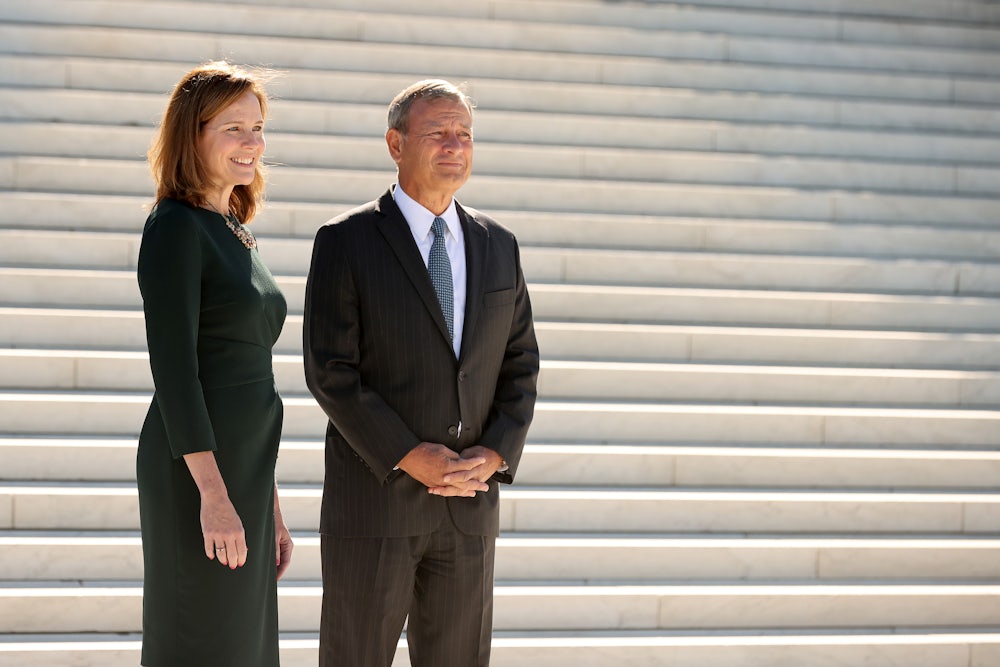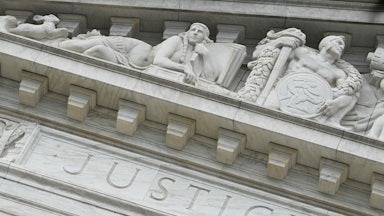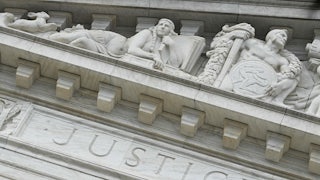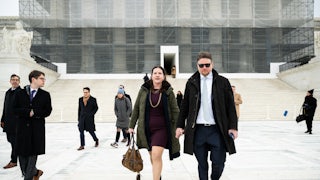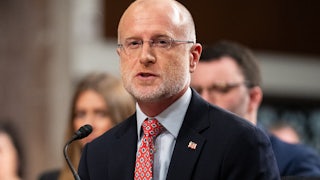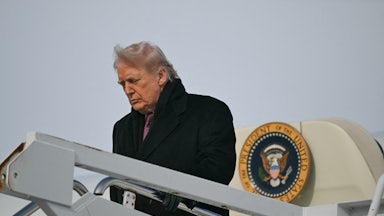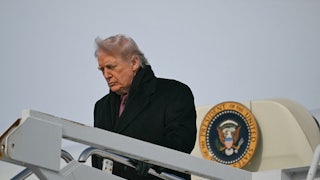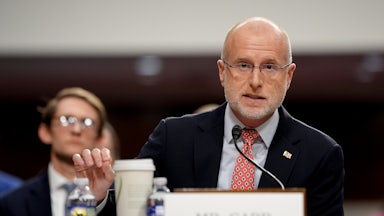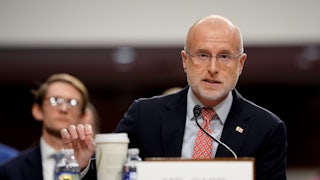Justice Neil Gorsuch had a revealing exchange with Solicitor General D. John Sauer during Wednesday’s oral arguments in the tariffs case that could threaten the backbone of what President Donald Trump has conceived as his economic plan. Much of the session was devoted to sketching out the scope of the president’s alleged power to levy tariffs under a 1977 law known as IEEPA.
None of the justices cut to the point as succinctly as Gorsuch did. “Could the president impose a 50 percent tariff on gas-powered cars and auto parts to deal with the unusual and extraordinary threat from abroad of climate change?” Gorsuch asked.
“It’s very likely that that could be done,” Sauer quickly replied. “That would be very likely.”
“I think that has to be the logic of your view,” Gorsuch continued. “I mean, obviously, this administration would say that it’s a hoax, that it’s not a real crisis,” Sauer added.
“I’m sure you would,” the justice replied, with a hint of drollness.
Gorsuch was among the justices who appeared highly skeptical of the administration’s arguments in Learning Resources v. Trump. Five others—Chief Justice John Roberts, Justice Amy Coney Barrett, and the court’s three liberal members—appeared to share that skepticism. Sauer’s answer to the question will undoubtedly fuel further doubts among the court’s conservatives.
The irony here is that climate change actually is a genuine crisis that warrants a forceful government response. But in the chambers of the Supreme Court, Sauer’s answer will likely land differently—and spur a different conclusion. This is the same lineup of justices that went out of its way to invalidate a moribund Obama-era policy so it could rule that the Environmental Protection Agency couldn’t regulate carbon emissions from power plants, after all.
I have pointed out from time to time that the Supreme Court has never applied the “major questions” doctrine, which was a focus of Wednesday’s arguments, to a Republican president. That doctrine limits the executive branch’s ability to exercise statutory authority if the courts think that Congress did not “speak clearly” enough on a matter of “vast economic and political significance.” After Wednesday’s oral arguments, the justices appear likely to rob me of that point.
Democratic presidents have to deal with the major questions doctrine all the time, on the other hand. Obama wrestled with an early incarnation of it toward the end of his second term, but Biden got the full brunt of it during his four years in office. The high court used it to block pandemic-era eviction moratoriums, Covid-19 testing and vaccination mandates, and student-loan debt relief, in addition to the aforementioned EPA case.
In each of these disputes, the conservative justices took issue with overbroad claims of power by a Democratic president during a national emergency. During oral arguments in Biden v. Nebraska, the student loan debt case, Justice Brett Kavanaugh took issue with the Biden administration’s use of a declared national emergency for the Covid-19 pandemic to wipe out hundreds of billions of dollars in outstanding debt.
“Some of the biggest mistakes in the court’s history were deferring to assertions of executive emergency power,” Kavanaugh told Elizabeth Prelogar, the solicitor general at the time. “Some of the finest moments in the court’s history were pushing back against presidential assertions of emergency power.”
Those points are indisputable, even if it is a little bizarre to implicitly compare cases like Korematsu v. United States to student loan debt relief. Kavanaugh’s concern about executive overreach two years ago is even more jarring when compared to its utter absence on Wednesday. He and Justice Samuel Alito spent roughly an hour cooking up hypotheticals where a president might desperately need to apply tariffs under the International Emergency Economic Powers Act.
“Suppose that there was an imminent threat of war—not a declared war but an imminent threat of war—with a very powerful enemy whose economy was heavily dependent on U.S. trade,” Alito asked at one point. “Could a president under this provision impose a tariff as a way of trying to stave off that war, or would you say, no, the president lacks that power under this provision?”
“Couldn’t do tariff,” Neal Katyal, who argued on behalf of the tariffs’ challengers, replied, “but could do quota, embargo, all of those things.” Alito sardonically indicated that he disagreed. “Could do all those things, but the president could not impose a tariff,” he repeated, as if baffled by it. “That’s the one thing he couldn’t do.”
This is not so baffling in the grand context of the American constitutional order. The executive branch’s power is supposed to flow from the Constitution and from the laws enacted by Congress, not from mere desire or convenience on the president’s part. But Alito and Kavanaugh sketched out a different view.
“It seems odd to imagine a meeting in the Oval Office where the president’s told, ‘Well, we have a problem with Country X and you can stop all trade with that country,’” Kavanaugh remarked, “and the president says, ‘Well, that’s too extreme, I want to calibrate my response to deal with this and maybe [impose] a tariff of some kind.’
“Well, you can’t do that,” he continued. “So you’re forcing the president to respond to an emergency, and, you know, Justice Alito has raised the point about, you know, a real emergency. And you’re taking away the president’s suite of tools when the one is much more extreme that is authorized. That just seems a bit unusual.”
Benjamin Gutman, who argued on behalf of the state governments challenging the tariffs, countered that there are a wide range of powers in IEEPA that the president could use to respond to this unspecified crisis. It fell to Justice Sonia Sotomayor to point out the underlying ridiculousness of the questions.
“I think what we’re forgetting here is a very fundamental point, which is the Constitution is structured so that if I’m going to be asked to pay for something as a citizen, it’s through a bill that is generated from Congress and the president has the power to veto it or not,” she explained. “But I’m not going to be taxed unless both houses, the executive and the legislature, have made that choice, correct?” (Gutman, to whom the question was nominally directed, agreed.)
Alito was content to pepper the lawyers with questions about when tariffs might be absolutely necessary in a crisis, as if 24’s Jack Bauer might have to impose custom duties on Vietnamese aluminum shipments or else Chicago would get incinerated by a suitcase nuke. Kavanaugh, for his part, came close to acknowledging the underlying ridiculousness of these emergency justifications.
“Why do you think Presidents Clinton, Bush, [or] Obama have not used IEEPA to impose tariffs?” the justice asked Sauer at one point. “Because there have been trade disputes and, certainly, you know, President Bush, steel imports, and the like. Why do you think IEEPA has not been used?”
Sauer replied that his team had looked through almost 70 different declared national emergencies and concluded that it was “really hard” to find one that would be a “natural tool” to address that emergency. “Take, you know, the Iranian hostage crisis,” Sauer explained. “President Carter didn’t say, ‘Oh, you seized all of our Embassy personnel, you’re holding them hostage, we’re going to tariff you.’”
President Donald Trump initially tied the tariffs in question in this case to genuine but unrelated crises, such as fentanyl overdoses, or exaggerated and misunderstood ones, like U.S. trade imbalances. Since then, the White House has only become more freewheeling with its rationales for IEEPA tariffs. As time has gone on, these have become increasingly unmoored from any possible interpretation of a national emergency. Again, it was Sotomayor who had to provide a reality check.
“I mean, I’m not even going to the pretext argument, OK?” she noted toward the end of the argument. “But the president threatened to impose a 10 percent tax on Canada for an ad it ran on tariffs during the World Series. He imposed a 40 percent tax on Brazil because its Supreme Court permitted the prosecution of one of its former presidents for criminal activity.”
Gorsuch’s question recognized this problem, as well. If a Republican president can levy taxes on foreign imports for any reason—or, as it sometimes seems, for none at all—then a Democratic president might do the same thing to achieve their policy ends. And so the Roberts court returned to its North Star: The conservative justices have found a way to stomach many things in the Trump era—but the possibility that a future Democratic president might one day successfully carry out their policy agenda is not among them.
